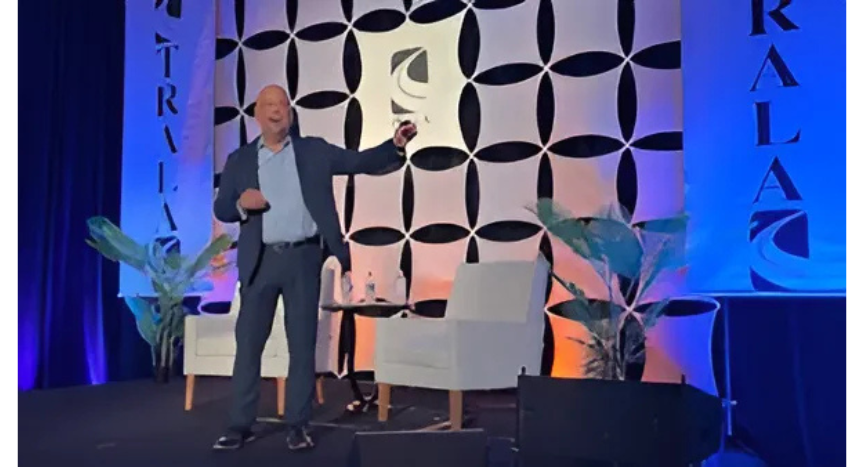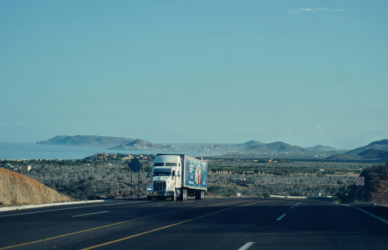Things were finally starting to look up in trucking. For the first time in a while, the freight market was showing signs of balance. Manufacturing was gaining some momentum, housing starts were climbing, and consumer spending had started to pivot back toward goods after years of favoring services. ATA Chief Economist Bob Costello, speaking last Tuesday at the Truck Renting and Leasing Association (TRALA) Annual Meeting in Doral, Florida, said the industry was on the verge of a meaningful rebound.
“I really thought we were coming out [of the freight recession] as an industry,” Costello said. “The economy as a whole was slowing down before the tariffs, but the things that drive truck freight were moving in the opposite direction. I thought things were going to get better.”
That brief optimism has since been shaken. A fresh round of tariffs from the Trump administration has thrown new pressure onto the freight economy, threatening to disrupt the fragile recovery that had only just begun. While the administration’s approach may be aimed at strengthening American manufacturing long term, Costello said the near-term consequences will be higher prices and tighter supply chains.
He noted that more than 70 countries have shown interest in negotiating trade agreements in response to last week’s tariffs, and there’s still a chance that some of the measures could be reversed or restructured. For Costello, that would be the best-case scenario. The markets briefly reflected that hope, bouncing slightly on Tuesday. He believes a targeted tariff strategy would be far more effective than broad, sweeping actions and could help ease the uncertainty that’s been creeping into economic forecasts.
“If the administration backed off quickly and said they got what they wanted, it would help us get back on track to where we were hoping to be,” he said.
Costello said he spent last Friday revising most of the key economic indicators impacting truck freight, adjusting expectations for 2025 from modest growth to stagnation or outright contraction. What had been a cautiously optimistic outlook for the year now points to flat or even declining performance across multiple fronts. Before the tariffs were announced, ATA had forecast U.S. GDP to grow by 1.4% in 2025, with quarterly growth at 1.2%, 1.6%, and 2.1%. As of Friday, those numbers have dropped to 0.3% for the year, and 0.5%, 0.3%, and 0% for the final three quarters.
The outlook for freight-related sectors isn’t faring any better. Factory output, originally expected to rise by 1.3% this year and 2.5% in 2026, is now forecast to decline by 1.0% and 0.8%. Previously projected to grow by over 2.0%, consumer spending on goods has been slashed to just 0.5% in 2025 and 0.6%. Even housing starts have taken a hit. Still, Costello urged the TRALA audience not to treat the latest numbers as set in stone. With tariff decisions evolving so quickly, the ATA has started time-stamping all of its forecasts. Any shift in trade policy—positive or negative—could immediately make the current data irrelevant.
Despite the volatility, Costello hasn’t ruled out a rebound. He emphasized that conditions were genuinely improving before the latest policy shifts. “Excluding the tariffs for a moment, things were starting to move in the right direction. It was going to get a little bit better and fleets were going to feel a little bit better,” he said.
Costello also flagged another possible future disruption—one tied to an ongoing investigation into Chinese shipbuilding and maritime practices. Earlier this year, the Trump administration released recommendations from the Biden-era U.S. Trade Representative that call for steep port call fees, ranging from $1 million to $3 million per entry, for Chinese-linked ships. These proposed penalties, aimed at curbing what the USTR labeled unfair trade practices, could severely impact the flow of imports into U.S. ports if enacted. However, Costello noted that the administration may reconsider the timing and scale of those fees amid industry pushback.
While the trucking industry just endured one of its longest freight recessions on record—27 months of sluggish conditions—Costello fears another downturn could be far more damaging. Many carriers were only just starting to regain their footing. “If another recession hits right now, it could be devastating for carriers who were finally starting to swim again after years of treading water,” he said.
For now, trucking’s path forward remains deeply tied to Washington’s decisions. Costello’s message was clear: the ingredients for recovery are still there, but so is the risk of letting it all unravel.
Source: Commercial Carrier Journal











